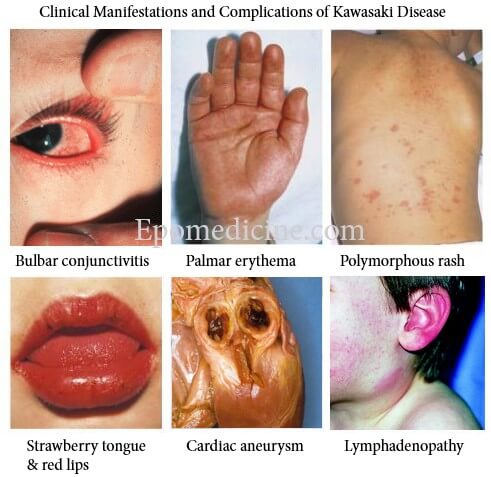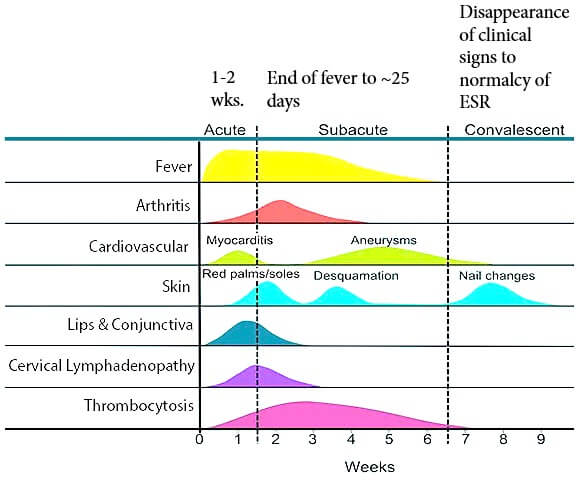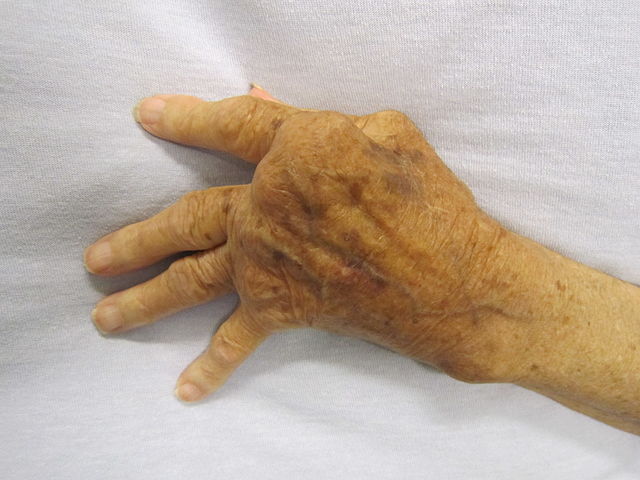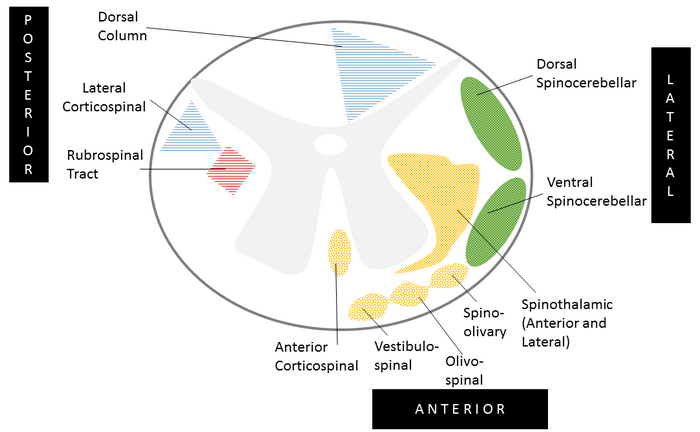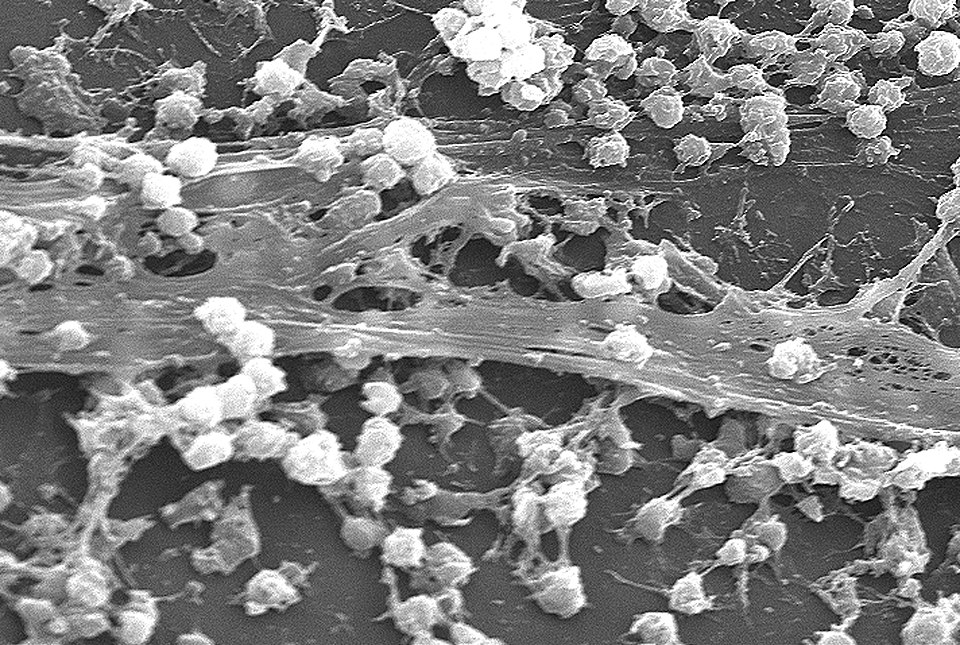The diagnostic criteria of Kawasaki Disease can be remembered using a mnemonic – “FEBRILE“.
Fever: >5 days plus ≥4 of the following
Enathem:
- Lips: Erythema, fissuring or crusting
- Oropharynx: Diffuse injection
- Tongue: Strawberry tongue
Bulbar conjunctivitis: Bilateral, painless and non-exudative
Rash: Polymorphous rash
Internal organ involvement (not the part of criteria)
- Cardiac artery aneurysm: commonest and most life-threatening complication
- Urethritis with sterile pyuria
- Aseptic meningitis
- Hydrops of gallbladder
- Sensorineural hearing loss
- Uveitis
- Hepatic dysfunction
Lymphadenopathy: >1.5 cm, non-suppurative
Extremity changes:
- Erythema of palms or soles
- Edema (non-pitting)
- Desquamation (perigenital and perineal followed by periungual, starting at the tips of finger)
Clinical Phases of Kawasaki Disease
